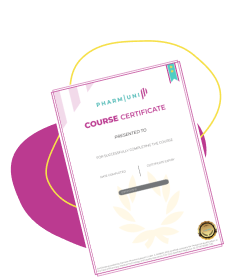GAMP 5 (Good Automated Manufacturing Practice)
Definition
GAMP 5, which stands for Good Automated Manufacturing Practice version 5, is a globally recognized set of guidelines developed by the International Society for Pharmaceutical Engineering (ISPE) to support the validation of automated systems used in pharmaceutical manufacturing and life sciences. It provides a risk-based approach to computer system validation (CSV) to ensure product quality and regulatory compliance.
GAMP 5 is widely used by regulatory bodies, manufacturers, and software vendors to establish and maintain validated systems in accordance with Good Manufacturing Practice (GMP) requirements. It emphasizes scalable validation processes based on system complexity and risk to patient safety, product quality, and data integrity.
Detailed Explanation
Purpose and Importance of GAMP 5
The primary purpose of GAMP 5 is to provide a structured, practical framework for validating computerized systems in regulated industries such as pharmaceuticals, biotechnology, and medical devices. The guidance ensures that systems are fit for their intended use and operate consistently within specified parameters.
GAMP 5 is essential in helping organizations:
- Meet regulatory requirements from agencies such as the FDA, EMA, and MHRA.
- Ensure data integrity, product quality, and patient safety.
- Reduce the cost and complexity of validation through a risk-based approach.
- Promote collaboration between IT, QA, engineering, and business units.
Key Principles of GAMP 5
GAMP 5 is built on five key principles:
- Product and Process Understanding: Validation should be grounded in a thorough understanding of the product and manufacturing process.
- Lifecycle Approach: Validation should follow the entire system lifecycle, from concept to retirement.
- Scalable Lifecycle Activities: Validation activities should be scaled based on system complexity and risk.
- Science-Based Quality Risk Management: Risk management should drive the level of validation effort.
- Leveraging Supplier Involvement: Use vendor documentation and testing when appropriate to reduce validation burden.
GAMP 5 and Computer System Validation (CSV)
GAMP 5 provides a comprehensive methodology for computer system validation (CSV), a regulatory requirement for ensuring that software and automated systems used in GxP environments perform as intended. The CSV process under GAMP 5 includes:
- System classification (Category 1 to Category 5 based on software complexity)
- Risk assessment to determine the level of validation effort
- Development of validation documentation (User Requirements Specification, Functional Specification, etc.)
- Testing and verification (Installation Qualification, Operational Qualification, Performance Qualification)
- Ongoing system maintenance and change control
For example, a laboratory information management system (LIMS) categorized as a Category 4 or 5 system would require more rigorous validation than a basic utility monitoring system categorized as Category 1 or 2.
Applications and Use Cases in Industry
GAMP 5 is applied across various automated systems in the pharmaceutical and life sciences industries, including:
- Manufacturing Execution Systems (MES)
- Laboratory Information Management Systems (LIMS)
- Building Management Systems (BMS)
- Enterprise Resource Planning (ERP) systems
- Clinical Trial Management Systems (CTMS)
In practice, companies use GAMP 5 to design validation protocols, assess vendor software, and ensure systems meet FDA 21 CFR Part 11 and EU Annex 11 requirements for electronic records and electronic signatures.
GAMP 5 vs. Previous Versions
Compared to earlier versions, GAMP 5 emphasizes a more flexible, risk-based approach to validation. It allows companies to leverage vendor testing and documentation, reducing redundant efforts. The focus on critical thinking and system lifecycle management aligns with modern quality systems and regulatory expectations.



